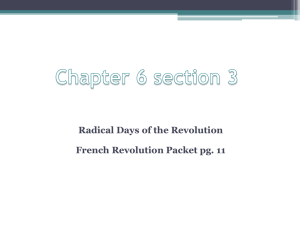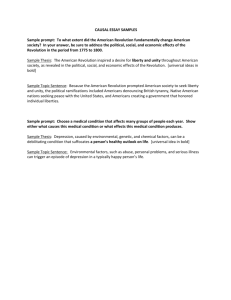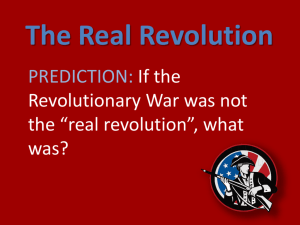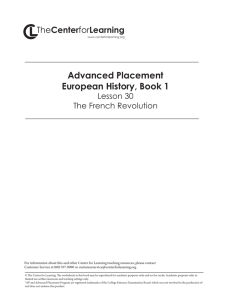French and American Revolution
advertisement
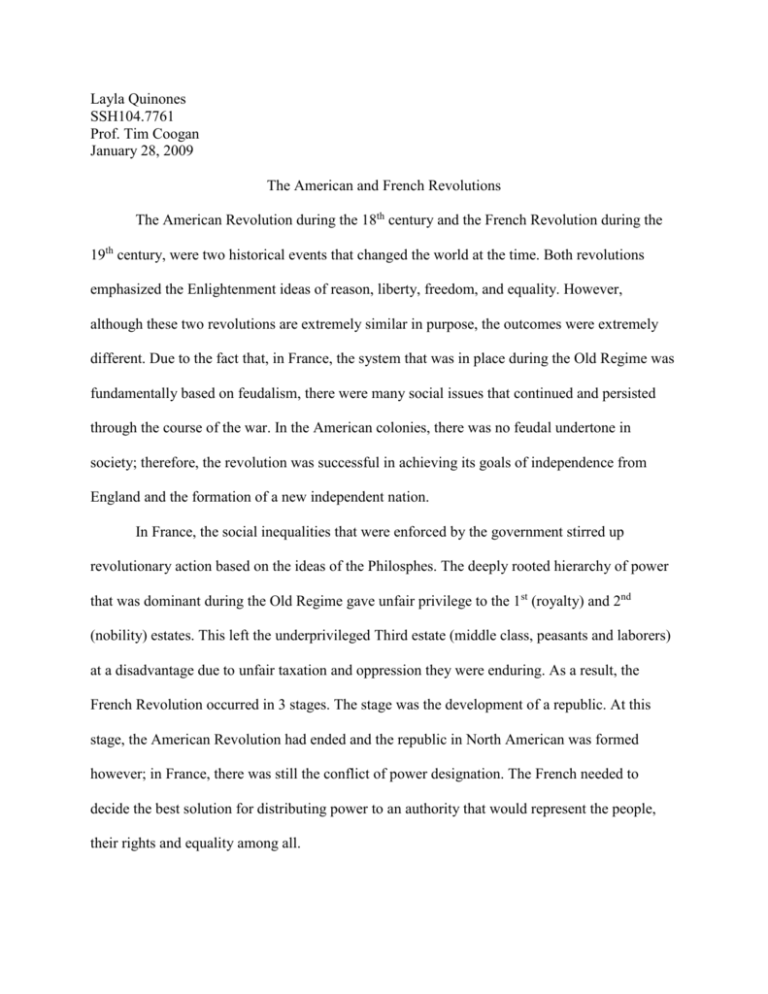
Layla Quinones SSH104.7761 Prof. Tim Coogan January 28, 2009 The American and French Revolutions The American Revolution during the 18th century and the French Revolution during the 19th century, were two historical events that changed the world at the time. Both revolutions emphasized the Enlightenment ideas of reason, liberty, freedom, and equality. However, although these two revolutions are extremely similar in purpose, the outcomes were extremely different. Due to the fact that, in France, the system that was in place during the Old Regime was fundamentally based on feudalism, there were many social issues that continued and persisted through the course of the war. In the American colonies, there was no feudal undertone in society; therefore, the revolution was successful in achieving its goals of independence from England and the formation of a new independent nation. In France, the social inequalities that were enforced by the government stirred up revolutionary action based on the ideas of the Philosphes. The deeply rooted hierarchy of power that was dominant during the Old Regime gave unfair privilege to the 1st (royalty) and 2nd (nobility) estates. This left the underprivileged Third estate (middle class, peasants and laborers) at a disadvantage due to unfair taxation and oppression they were enduring. As a result, the French Revolution occurred in 3 stages. The stage was the development of a republic. At this stage, the American Revolution had ended and the republic in North American was formed however; in France, there was still the conflict of power designation. The French needed to decide the best solution for distributing power to an authority that would represent the people, their rights and equality among all. Unfortunately, Maximilien Robespierre, a member of the bourgeoisie, exercised power in the form of dictatorship over the people in the stage of the revolution regarded as the reign of terror. This created conflict among the French because Robespierre continued to persecute anyone who threatened the republic and exercised violence, censorship, terror, and inequality for people other than the bourgeoisie. Although Robespierre claimed his rule based on the ideals of freedom, liberty, reason, and sovereignty; he did so in a selective manner whereas the nobility and royalty were unequal to the rest of the French while the peasants and laborers were inferior to the middle class. In fact, Robespierre used terror to “rescue” the republic and the revolution from complete destruction however felt it was necessary to save France by exterminating anyone who threatened the government. The next stage of the Revolution was the reign of Napoleon. Although he was a very intelligent and articulate general who knew how to appeal to the French people, he also was obsessed with power. His primary goal was to advance France and conquer all of Europe, creating a vast Empire. He too emphasized freedom, liberty, equality, sovereignty, nationalism, religious tolerance, secular education, and equality. He denounced all ideals of the Old Regime and was determined to spread his view to the entire world. However, his thrust for power and glory lead to his eventual defeat by Russia and exhalation. Unlike the American Revolution, the French Revolution was extremely bloody, messy and confusing. Generally, the French Revolution was a power struggle in the name of fraternity, equality, and liberty. However, due to the deeply rooted feudal social and political structure that the Old Regime entailed, it was difficult for power to be divided so that the French people would not revolt again. In essence, the Americans wanted freedom from the English and the right to rule themselves equally. As for the French, they wanted complete equality from any form of oppressive government and did not stop until they achieved what they wanted. The Enlightenment essential sparked the rocket of Revolution and, unfortunately for the French, shot out of control for many years.


